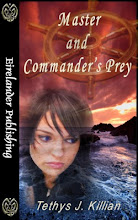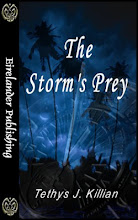Archetypes.
What do most writers actually abide by when penning heroines?
Stereotypes!
What's the difference, you may ask?
An archetype is a generalized description of a certain 'type' of person. Like the Librarian, who is an introvert but who hides herself behind the quiet exterior - she may in fact be a warm and nurturing person behind the facade of the cool professional. She also leads with her brain, is rational and thinks things through, not given to impulse and passion.
A stereotype is a generalized notion that is ascribed to a certain category of persons. Take a real librarian - the stereotype has her as a mouse-like creature with a tight bun and thick glasses and prim and proper clothes who whips her hair loose, rips her blouse off to reveal a Wonderbra when she is overwhelmed by passion and thus she jumps poor unsuspecting men when her inner vixen is unleashed.
Which one of those descriptions sounds more plausible to you?
I would say the first. The Librarian archetype does not apply specifically to a library professional, and it is a description that fits a certain portrayal of the quiet, brainy heroine who hides her real self behind a facade.
A stereotype is most of the time a 'false' notion. Librarians don't usually jump the bones of every guy who comes their way, do they? Other stereotypes that completely miss the point are, for example:
All blondes are brainless bimbos.
All mechanics are beer guzzling and women obsessed testosterone-driven machines.
All writers are creatures who live inside a cave and rarely come out to see the light.
Do these sound true to you? Okay, if they do, are they true?
So why is it that writers still go with stereotypes when creating their characters, and more precisely, their heroines?
Another thing that arises when one goes with stereotypes and other such notions is the concept of polarization.
Polarization is taking a character description to an extreme. For example, look at the women in Desperate Housewives. Brought down to the bare bones, this is what it dwindles to (though the show did help redeem them through other traits. But back to the core issue - how they are stereotyped, expecially at the start when the characters are exposed to the viewing audience)
Bree gives the polar end of the manic housewife - always needing to be perfect.
Susan is the polar extreme of the ditzy, clumsy and goofy woman - can someone really string goof after goof like she does?
Lynette is the polar extreme of the harried mom - she doesn't know what to attend to and where to give her energy.
Eddie is the polar extreme of the seductress who seduces anything in pants.
This was actually how the show was described prior to its release, and shortly after it was aired too, before the audience came to grasp the different facets layering the plot and characterisation.
While the initial descriptions helped work this cast in the story, do they sound realist? Not exactly, right? Real women can have such characteristics, but in real life the extreme is not dramatized as in the TV series.
So next time you want to create a 'novel' character, take a minute to pause and ponder. If you are taking a stereotype to work with, find out to what point the stereotype can be true. Saying that all White folks are racists, while a stereotype, is far-fetched and terribly untrue, so much so that you as a writer will lose all credibility if you use this ploy.
If you're going for a polar extreme, then too, ask yourself if that extreme could exist in real life. While your suburban neighbour can happen to be a Bree Van de Kamp clone, how many other housewives do you think will fit the bill?
When faced with stereotypes and polar extremes, take them and tamper them down to a realistic degree. Then twist and turn this facet into a unique premise that works for your story, your character, and you as a writer.
Your readers and your critics will only thank you for that!
As always, all comments welcome!
 Aasiyah Qamar - Cultural romantic fiction, with a twist
Aasiyah Qamar - Cultural romantic fiction, with a twistWith stories set amidst the rainbow nation of Mauritius, a multicultural island in the Southern Indian Ocean, author Aasiyah Qamar brings you tales of today's young women battling life on all fronts and finding love where they least expect it. Indo-Mauritian culture wants to stifle them in traditions, customs and antiquated morals while the world is opening its arms of modernity and globalisation. Where do these women belong? And more importantly, with whom? Find out more about her first release, The Other Side, here.





.jpg)
.jpg)






6 comments:
Z - great entry! Thankfully, my characters come to me as individuals, so I don't really "create" them. In general when I meet them, they already have their background and baggage intact. I do have to look up certain characteristics to see if they are true to their archetype.
Z,
I had never really thought about the extremes since I always use elements of people all around me.
Another wonderful post.
Thanks ladies!
Glad to note you both write far from the extremes!
While many of us do 'get' the characters as individuals, that is sadly not the case for many writers, especially debut ones. It's also very easy to fall into the trap of relying on a stereotype, and that's what writers must beware of.
Thanks for the comments!
Hugs
Z(Aasiyah/Nolwynn)
Actually, my characters have similarities to people I have known. lol
Yup, it's a fine line between stereotypes and archetypes. What might work in a televised soap opera wouldn't fly in a novel.
In novels we need that firm sense of reality. Great, great post, Z!!
Thanks Chiron.
The debate here arises as to the conventions of every medium - what is needed for a visual medium is different from the written one.
Lol, scope for another post here!
Hugs
Z(Aasiyah/Nolwynn)
Post a Comment